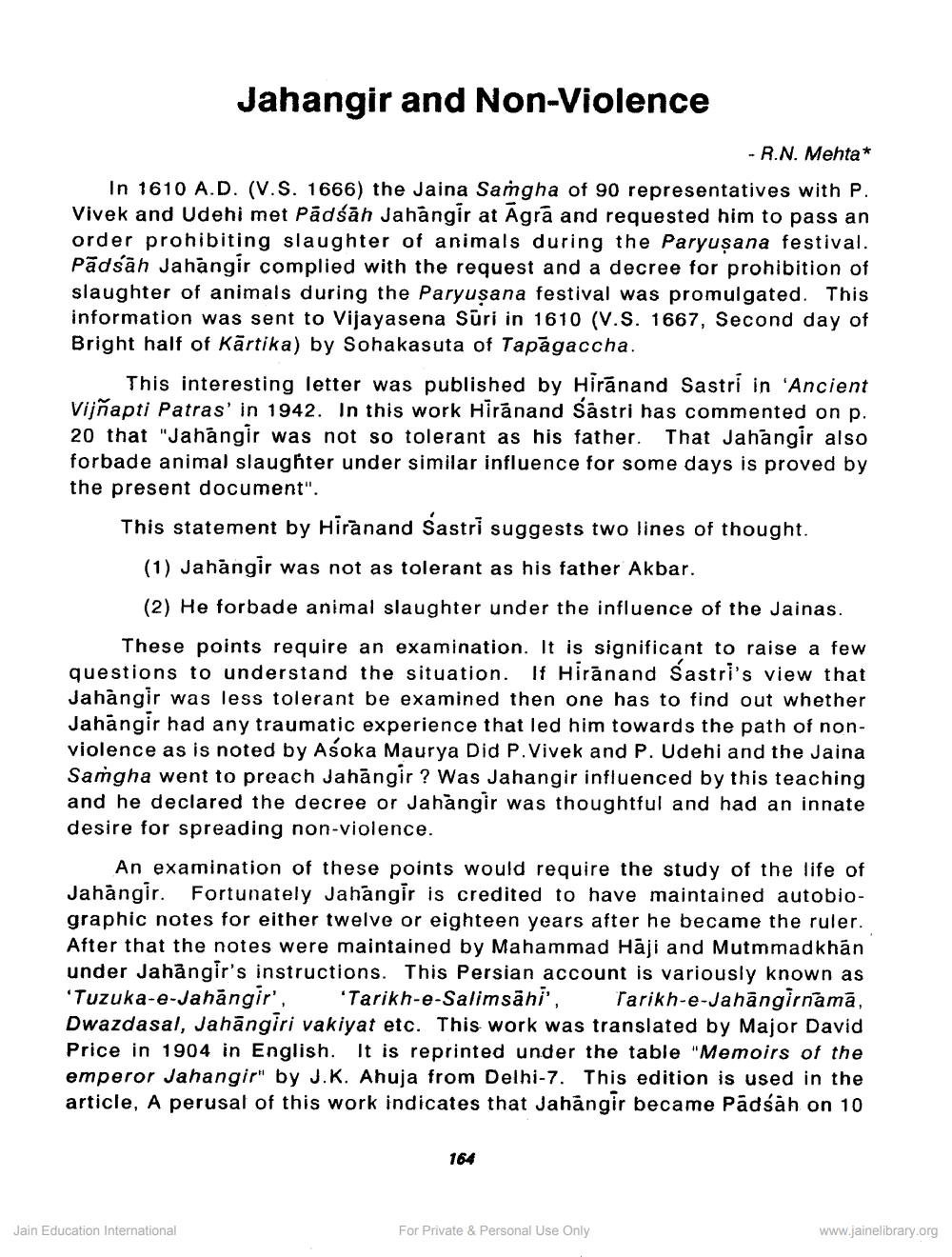Book Title: Jahangir and Non Violence Author(s): Ramanlal N Mehta Publisher: Z_Shwetambar_Sthanakvasi_Jain_Sabha_Hirak_Jayanti_Granth_012052.pdf View full book textPage 1
________________ Jahangir and Non-Violence - R.N. Mehta* In 1610 A.D. (V.S. 1666) the Jaina Samgha of 90 representatives with P. Vivek and Udehi met Pädśāh Jahangir at Agrā and requested him to pass an order prohibiting slaughter of animals during the Paryusana festival. Pādsah Jahangir complied with the request and a decree for prohibition of slaughter of animals during the Paryusana festival was promulgated. This information was sent to Vijayasena Sūri in 1610 (V.S. 1667, Second day of Bright half of Kārtika) by Sohakasuta of Tapāgaccha. This interesting letter was published by Hiranand Sastri in 'Ancient Vijñapti Patras' in 1942. In this work Hiranand Sastri has commented on p. 20 that "Jahangir was not so tolerant as his father. That Jahangir also forbade animal slaughter under similar influence for some days is proved by the present document". This statement by Hiranand Sastri suggests two lines of thought. (1) Jahangir was not as tolerant as his father Akbar. (2) He forbade animal slaughter under the influence of the Jainas. These points require an examination. It is significant to raise a few questions to understand the situation. If Hirānand Sastri's view that Jahangir was less tolerant be examined then one has to find out whether Jahangir had any traumatic experience that led him towards the path of nonviolence as is noted by Asoka Maurya Did P. Vivek and P. Udehi and the Jaina Samgha went to preach Jahangir ? Was Jahangir influenced by this teaching and he declared the decree or Jahangir was thoughtful and had an innate desire for spreading non-violence. An examination of these points would require the study of the life of Jahangir. Fortunately Jahangir is credited to have maintained autobiographic notes for either twelve or eighteen years after he became the ruler. After that the notes were maintained by Mahammad Haji and Mutmmadkhán under Jahangir's instructions. This Persian account is variously known as 'Tuzuka-e-Jahangir', 'Tarikh-e-Salimsāni', Tarikh-e-Jahāngirnamā, Dwazdasal, Jahāngiri vakiyat etc. This work was translated by Major David Price in 1904 in English. It is reprinted under the table "Memoirs of the emperor Jahangir" by J.K. Ahuja from Delhi-7. This edition is used in the article, A perusal of this work indicates that Jahangir became Padsah on 10 164 Jain Education International For Private & Personal Use Only www.jainelibrary.orgPage Navigation
1 2 3
